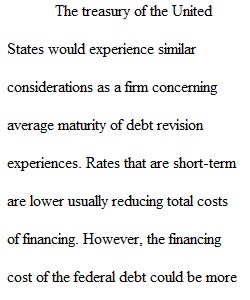


Q In early 2014, the United States government had more than $17 trillion in debt (approximately $55,000 for every U.S. citizen) outstanding in the form of Treasury bills, notes, and bonds. From time to time, the Treasury changes the mix of securities that it issues to finance government debt, issuing more bills than bonds or vice versa. With short-term interest rates near 0 percent in early 2014, suppose the Treasury decided to replace maturing notes and bonds by issuing new Treasury bills, thus greatly shortening the average maturity of U.S. debt outstanding. Discuss the pros and cons of this strategy.
View Related Questions